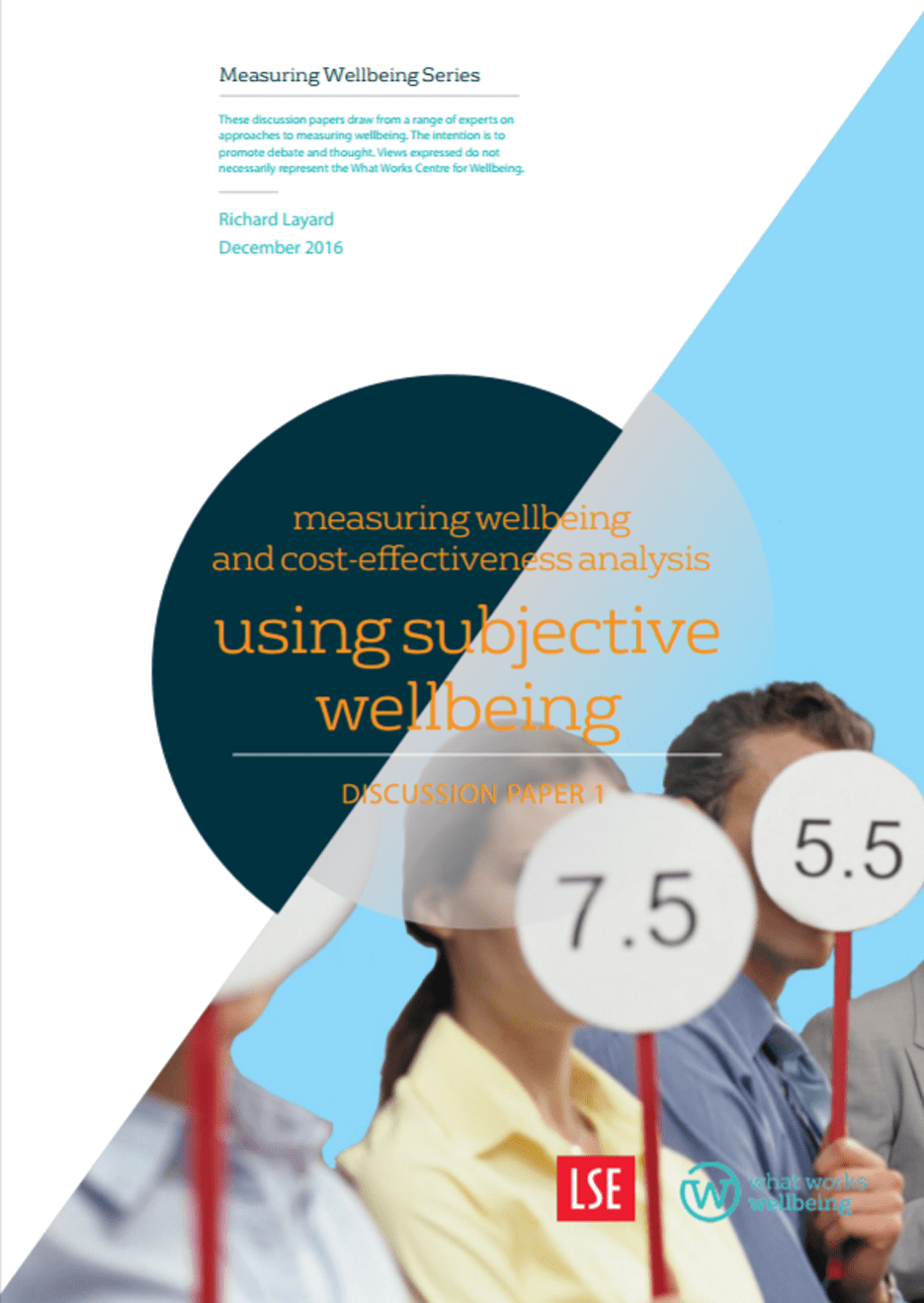Measuring Wellbeing and cost-effectiveness analysis: discussion paper 1
Downloads

Using Subjective Wellbeing (Discussion paper 1)
A central problem for decision-makers is how to allocate resources between different activities. When the outcomes of these activities are measured using different units, comparisons are extremely difficult – for example how does one compare a 5% reduction in the rate of burglaries, with a 1% decrease in unemployment rate?
Being able to convert these impacts into the same units allows outcomes to be compared. For this purpose, we propose to use “life-satisfaction” as the common currency.
This paper proposes a set of exchange rates for converting other measures of wellbeing into equivalent levels of life-satisfaction (section 2); discusses how we could give greater weight to the reduction of misery (section 3); and discusses how policies could be assessed by the wellbeing benefits they bring relative to the net expenditure they involve (section 4).
For all these purposes, what is always needed is information about magnitudes (preferably with confidence intervals). Knowing that something has a significant influence on wellbeing is of little help, unless we also know the size of the influence.
About our Measuring Wellbeing Series
These discussion papers draw from a range of experts on approaches to measuring wellbeing. The intention is to promote debate and thought.
Views expressed do not necessarily represent the What Works Centre for Wellbeing.
Why ignite discussion about measuring wellbeing?
In our role as an independent collaborating centre and thought leader, the What Works Centre for Wellbeing brings together the disparate theoretical threads to draw out what this means, practically, for decision makers. The Centre recognises wellbeing as a multi-dimensional concept, where a range of definitions and measures may apply and are useful for different purposes.
We don’t have just one measure of health or illness; we have many different tools designed to help us understand each in different situations. We’d like to encourage discussion of how different approaches to understanding and measuring wellbeing might be applied as ‘the best tool for the job’ in different situations as well.
This series of discussion papers includes inputs from leaders in the field. It draws together views of how we could define and measure wellbeing and use this in decision-making in different sectors across UK.
What does this mean for me?
These discussion papers are mainly aimed at analysts, wanting to understand the latest thinking and theoretical underpinnings. However, the accompanying blog and ‘Practical Guides’ are aimed at all audiences who may be considering how to put wellbeing into practice.
We hope that this paper and series will prompt discussion and bring these methods to life, so we can put these into practice.
![]()
[gravityform id=1 title=true description=true ajax=true tabindex=49]


